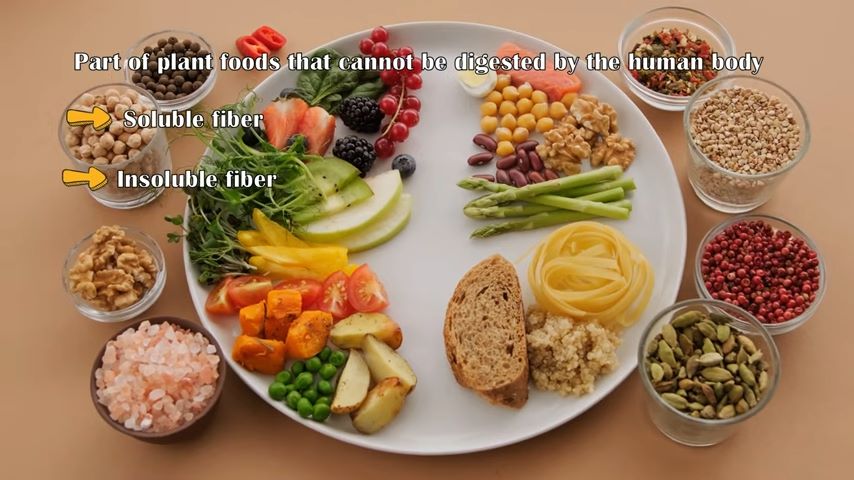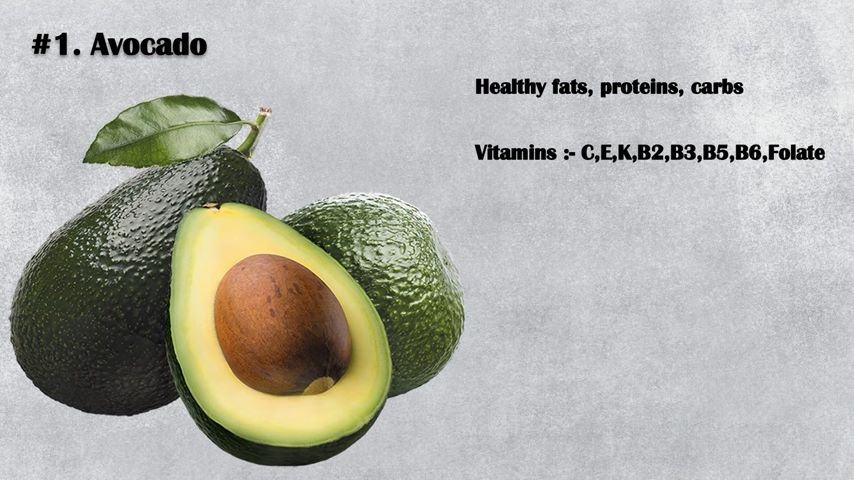Understanding Hunger and Appetite Control
Last month, I found myself standing in front of the refrigerator just an hour after dinner, feeling those familiar hunger pangs despite having eaten a full meal. The frustration of constant hunger while trying to maintain a healthy weight is something many of us experience. After researching the science behind appetite control, I discovered that certain foods can naturally help us feel fuller longer, knowledge that has completely transformed my approach to eating.
Controlling your appetite doesn’t have to mean feeling deprived or hungry. Science shows that eating the right foods can help you feel more satisfied while consuming fewer calories. The key lies in understanding how our bodies regulate hunger and how certain foods interact with our hunger hormones.
Appetite control is not just about willpower, it’s about biology. Our brains, specifically the hypothalamus, regulate hunger through a complex system of hormones like leptin, ghrelin, insulin, and peptide YY. These hormones signal when to start and stop eating, but modern processed foods can disrupt these natural signals, leaving us constantly craving more.
The good news? By incorporating specific appetite-suppressing foods into your diet, you can work with your body’s natural hunger regulation system rather than fighting against it. This guide explores how these foods work and which ones deliver the best results for natural appetite control.
The Science Behind Appetite Regulation
How Your Body Controls Hunger

Your hunger isn’t simply about having an empty stomach, it’s a complex system centered in your brain’s hypothalamus. This ancient brain region communicates with your body through several key hormones:
- Leptin: Produced by fat cells, leptin signals fullness to your brain
- Ghrelin: Known as the “hunger hormone,” ghrelin increases appetite
- Insulin: Directs energy from food into your cells and affects blood sugar
- Peptide YY: Reduces appetite and increases feelings of fullness
- Cholecystokinin: Stimulates digestion and promotes satiety
These hormones work together to regulate when you feel hungry and when you feel full. However, modern diets high in processed foods, refined carbohydrates, and sugar can disrupt this delicate balance, leading to increased hunger, cravings, and overeating.
The 3 Pillars of Appetite Control
Based on the latest research, there are three key approaches to naturally controlling appetite:
- Blood Sugar Management: Stabilizing your blood sugar prevents energy crashes and premature hunger
- Slow-Absorbing Foods: Foods that take longer to digest help you stay full longer
- Healthful Behaviors: Sleep, exercise, and stress management profoundly affect hunger hormones
Understanding these pillars helps explain why certain foods are more effective at suppressing appetite than others.
Top 15 Appetite-Suppressing Foods
High-Protein Foods
- Eggs

Eggs rank high on the satiety index, which measures how well foods satisfy hunger. Rich in high-quality protein and healthy fats, eggs activate multiple pathways that signal fullness.
Research shows that participants who ate eggs for breakfast consumed fewer calories throughout the day compared to those who ate a carbohydrate-rich breakfast with the same calorie count.
- Greek Yogurt

With nearly double the protein of regular yogurt and a creamy texture, Greek yogurt provides lasting satiety. The protein in Greek yogurt increases levels of appetite-reducing hormones GLP-1 and PYY.
How to include it: Enjoy plain Greek yogurt with fresh berries and a sprinkle of nuts for a satisfying snack or breakfast.
- Lean Poultry and Fish
Chicken, turkey, and fish provide excellent protein with minimal calories. Research shows that protein requires more energy to digest than carbs or fat, increasing your metabolic rate while keeping you full.
Pro tip: A palm-sized portion of lean protein at each meal can significantly reduce hunger between meals.
Fiber-Rich Foods

- Beans and Legumes
Beans, lentils, and chickpeas deliver a powerful combination of protein and fiber. Their slow digestion rate provides steady energy while keeping hunger at bay.
Research shows: A 2017 review found that people who ate pulses felt 31% fuller than those who consumed control meals of the same calories.
- Chia Seeds

These tiny seeds expand in your stomach, forming a gel-like substance that slows digestion and prolongs fullness. Just one ounce provides 10 grams of fiber.
How to use them: Add 1-2 tablespoons to yogurt, smoothies, or oatmeal, or make chia pudding by soaking in almond milk overnight.
- Avocados

Rich in monounsaturated fats and fiber, avocados provide the perfect combination for appetite control. Their creamy texture also contributes to meal satisfaction.
Research shows: Adding half an avocado to lunch reduced hunger by 40% for three hours afterward in one study.
Complex Carbohydrates
- Oatmeal
The soluble fiber in oatmeal, called beta-glucan, forms a gel-like substance in your gut that slows digestion and suppresses hunger hormones.
Pro tip: Choose steel-cut or old-fashioned oats instead of instant varieties for slower digestion and better appetite control.
- Sweet Potatoes
With their natural sweetness and high fiber content, sweet potatoes provide satisfaction while managing blood sugar better than white potatoes.
How to enjoy them: Baked sweet potatoes with a small amount of cinnamon make a satisfying side dish or snack.
Healthy Fats
- Nuts and Seeds
Almonds, walnuts, flaxseeds, and other nuts provide protein, fiber, and healthy fats, the trifecta for appetite control. Their crunchy texture also requires more chewing, which promotes fullness signals.
Research shows that regular nut consumption is associated with lower rates of weight gain despite their calorie density.
- Olive Oil
The monounsaturated fats in olive oil can increase the production of a compound called OEA (oleoylethanolamide) in the small intestine, which signals fullness to the brain.
How to use it: Drizzle on salads or use in cooking, but remember that portions matter; aim for 1-2 tablespoons daily.
Fruits and Vegetables
- Apples
Apples contain pectin, a soluble fiber that slows digestion and promotes fullness. Their high water content and satisfying crunch make them particularly effective for appetite control.
Research shows that eating an apple 15 minutes before a meal reduced calorie intake by an average of 15% in one study.
- Berries
Low in calories but high in fiber and water, berries provide sweetness with minimal sugar impact. Their fiber content slows digestion and improves blood sugar stability.
Pro tip: Keep frozen berries on hand for an accessible, appetite-suppressing addition to yogurt or smoothies.
- Leafy Greens
Spinach, kale, and other leafy greens provide volume with very few calories, allowing you to eat satisfying portions while managing calorie intake.
How to include them: Start meals with a leafy green salad to reduce overall meal consumption by up to 12%, according to research.
Functional Foods and Spices
- Ginger
This warming spice has been shown to enhance feelings of fullness and reduce hunger. It may also help stabilize blood sugar levels, which prevents hunger spikes.
Research shows that consuming 2 grams of ginger powder dissolved in hot water at breakfast reduced hunger for several hours afterward.
- Green Tea
The catechins in green tea, particularly EGCG, may increase feelings of fullness while boosting metabolism. The mild caffeine content also helps suppress appetite temporarily.
How to use it: Drink 1-2 cups between meals, but avoid consumption close to bedtime if caffeine affects your sleep.
How to Incorporate Appetite-Suppressing Foods Into Your Diet
Optimal Meal Timing and Structure
The timing and structure of your meals can significantly impact appetite control:
- Start with protein and fiber: Begin each meal with protein and fiber-rich foods before moving on to carbohydrates
- Front-load calories: Consuming more calories earlier in the day aligns with your body’s natural metabolic rhythm
- Consider meal spacing: Allow 4-5 hours between meals to let hunger hormones reset naturally
Sample 3-Day Appetite Control Meal Plan
Day 1
Breakfast: Greek yogurt with berries, chia seeds, and a small handful of almonds
Lunch: Large salad with leafy greens, grilled chicken, avocado, and olive oil dressing
Dinner: Baked salmon with sweet potato and steamed broccoli
Snack: Apple slices with a tablespoon of natural peanut butter
Day 2
Breakfast: Vegetable omelet with 2-3 eggs and a side of sliced avocado
Lunch: Lentil soup with a side salad dressed with olive oil and lemon
Dinner: Turkey breast with quinoa and roasted vegetables
Snack: A small handful of mixed nuts and seeds
Day 3
Breakfast: Steel-cut oatmeal with cinnamon, berries, and a tablespoon of ground flaxseed
Lunch: Chickpea and vegetable wrap with hummus on a whole grain tortilla
Dinner: Grilled chicken with black beans and steamed vegetables
Snack: Celery sticks with 2 tablespoons of Greek yogurt dip
Beyond Food: Other Natural Appetite Suppressants
Sleep and Appetite Connection
Poor sleep disrupts hunger hormones, specifically increasing ghrelin (hunger hormone) and decreasing leptin (fullness hormone). Research shows that people who sleep less than 6 hours per night consume an average of 300 more calories daily than those who get 7-8 hours.
Tips for better sleep:
- Maintain a consistent sleep schedule
- Create a dark, cool sleeping environment
- Avoid screens 1-2 hours before bedtime
- Limit caffeine after noon
Exercise and Hunger Management
While some people experience increased hunger after exercise, research shows that regular physical activity helps regulate appetite hormones over time. Specifically:
- Moderate aerobic exercise can temporarily suppress hunger hormones
- Strength training increases muscle mass, raising overall metabolic rate
- High-intensity interval training (HIIT) may be particularly effective for appetite control
Pro tip: Schedule workouts before meal times when possible, as exercise can temporarily suppress appetite for up to an hour afterward.
Stress Management
Chronic stress elevates cortisol levels, which increases appetite, particularly for high-calorie, high-carbohydrate “comfort foods.” Effective stress management techniques include:
- Mindfulness meditation (even 5-10 minutes daily)
- Deep breathing exercises
- Regular physical activity
- Time in nature
- Adequate leisure and rest time
Common Myths About Appetite Suppressants
Myth 1: All appetite suppressants are dangerous
Reality: While some pharmaceutical appetite suppressants have risks, natural foods that promote fullness are safe and beneficial for overall health.
Myth 2: Drinking water alone will significantly reduce appetite
Reality: While water can help temporarily fill the stomach, it’s most effective when combined with high-fiber foods that slow digestion.
Myth 3: Skipping meals helps control appetite
Reality: Skipping meals often leads to excessive hunger later, resulting in poor food choices and overeating. Regular, balanced meals better regulate hunger hormones.
Myth 4: All fats make you hungrier
Reality: Healthy fats are crucial for appetite control. Only trans fats and some highly processed oils promote inflammation and disrupt satiety signals.
FAQ: Appetite-Suppressing Foods
Are appetite-suppressing foods better than supplements?
Answer: Yes, natural, whole foods are generally safer and more effective than supplements. They provide multiple nutrients that work together to promote fullness while supporting overall health. Supplements often contain isolated compounds that may not work as effectively without their natural co-factors.
Can appetite-suppressing foods help with specific diets like keto or vegan?
Answer: Absolutely. For keto dieters, focus on high-fat appetite suppressants like avocados, nuts, seeds, and eggs. Vegans can emphasize beans, lentils, nuts, seeds, and high-fiber fruits and vegetables. Every dietary pattern can incorporate appropriate appetite-suppressing foods.
How quickly do appetite-suppressing foods work?
Answer: Some effects are immediate, protein and fiber can help you feel full right after eating. Other benefits develop over time as your metabolism and hunger hormones adjust. Consistency is the key aim to include these foods daily for at least 2-3 weeks to notice significant changes in appetite patterns.
Can appetite-suppressing foods lead to undereating?
Answer: When using natural whole foods rather than supplements or medications, this is rarely a concern. Your body has natural hunger signals that will activate when you truly need nutrition. However, if you find yourself consistently uninterested in food or losing weight unintentionally, consult a healthcare provider.
What’s more effective: appetite-suppressing drinks or solid foods?
Answer: Research strongly favors solid foods for appetite suppression. Chewing stimulates satiety hormones, and solid foods generally remain in the stomach longer than liquids. However, some beverages, like high-protein smoothies with added fiber, can be effective when properly formulated.
Conclusion: A Sustainable Approach to Appetite Control
Controlling your appetite doesn’t require extreme restriction or expensive supplements. By understanding how your body regulates hunger and incorporating the right foods into your diet, you can naturally reduce cravings and feel satisfied with appropriate portions.
Remember that managing appetite is just one part of a healthy relationship with food. Rather than focusing solely on eating less, aim to eat better, nutrient-dense, minimally processed foods that support your overall health while naturally helping you maintain a healthy weight.
The science is clear: protein, fiber, healthy fats, and minimally processed carbohydrates form the foundation of a satisfying diet that works with your body’s hunger signals rather than against them. Combined with adequate sleep, regular exercise, and stress management, these appetite-suppressing foods can help you achieve sustainable weight management without constant hunger.
Which appetite-suppressing food will you add to your next meal? Start small, even incorporating one or two of these foods daily, can make a noticeable difference in how satisfied you feel and how well you manage your hunger throughout the day.
This article is for informational purposes only and is not intended to offer medical advice. Always consult with a qualified healthcare provider before making significant changes to your diet, especially if you have underlying health conditions.
